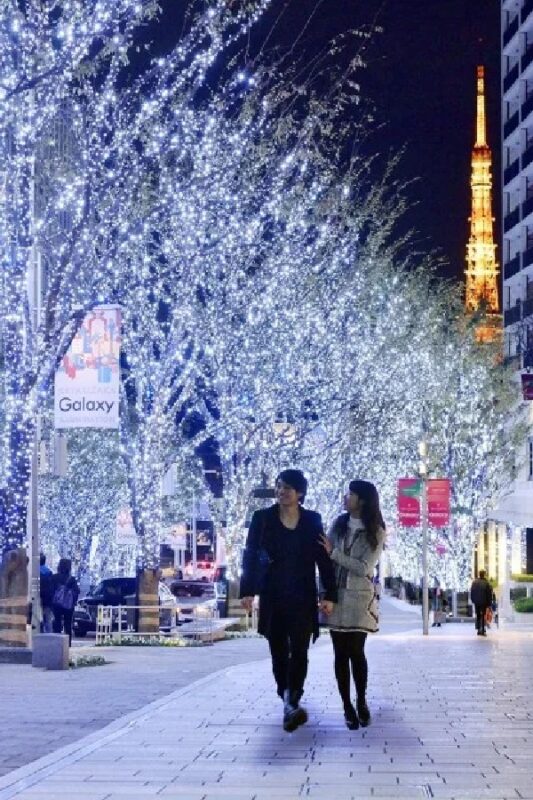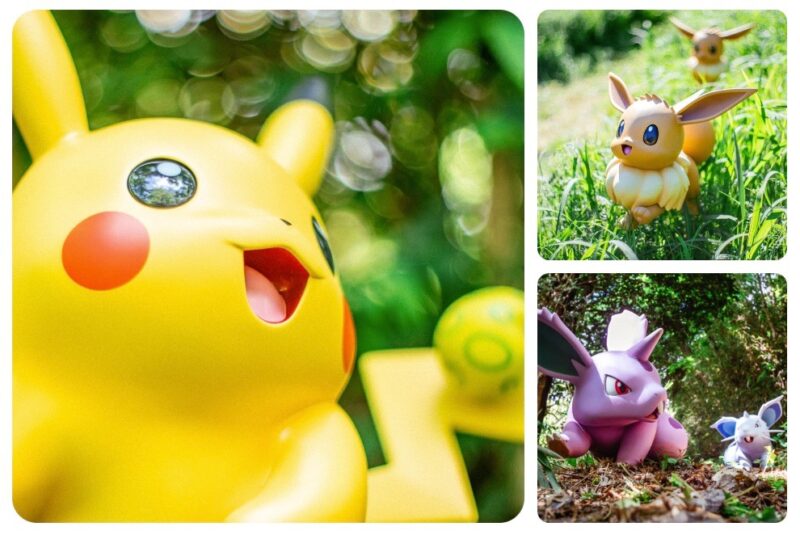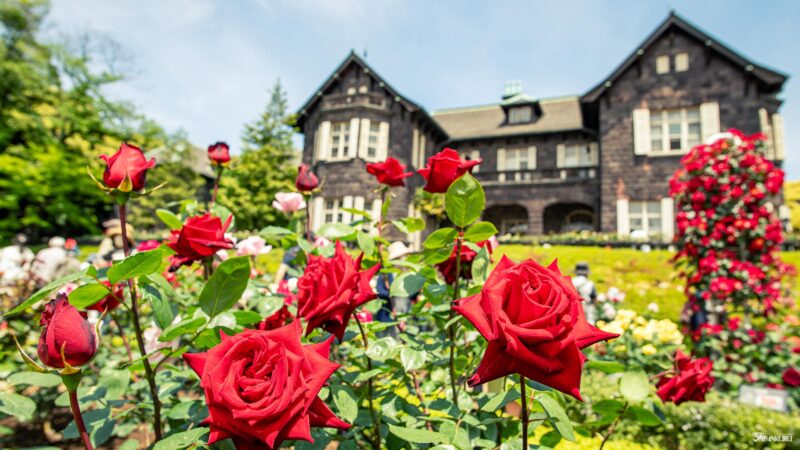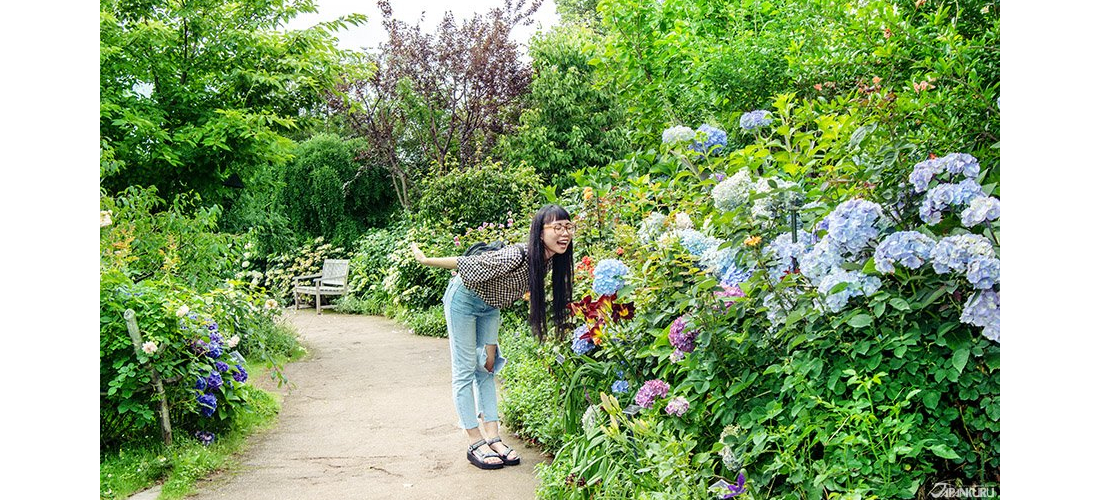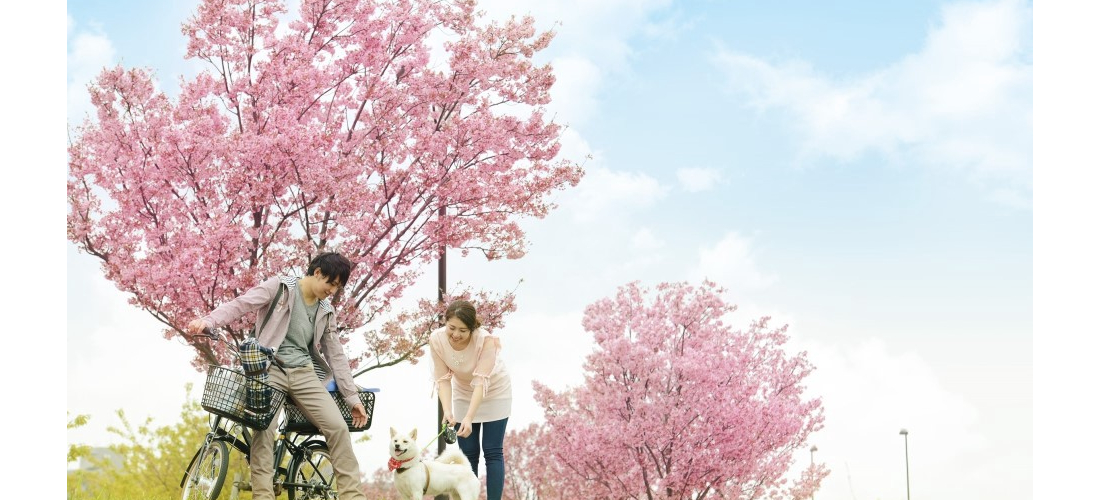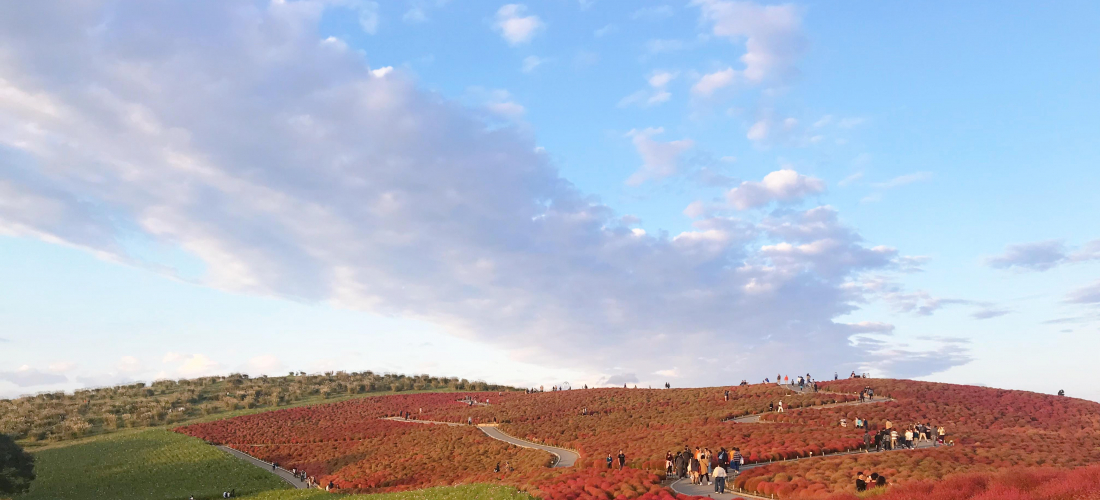
CONTENTS
Tokyo Flower Viewing in the Fall!?
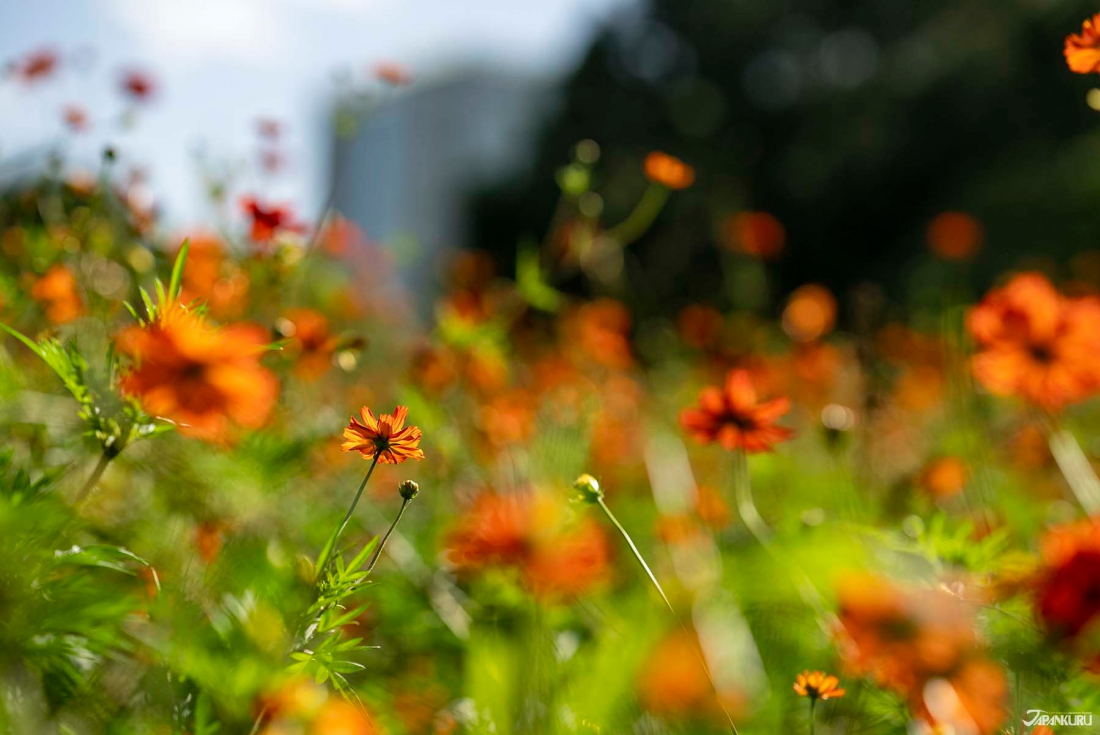
Autumn in Japan brings a breath of fresh air, sweet treats packed with chestnuts and sweet potato, and the changing of the leaves called “koyo“… but also fresh new flowers! Japan’s tradition of “hanami” (花見) is so strongly tied to the spring that in English the word is often translated as “cherry blossom viewing” instead of the more direct “flower viewing,” but hanami has long encompassed all kinds of flowers, and this celebration of the seasons can be enjoyed year round! In some parts of Japan, you can even find cherry blossoms that bloom in October and November, but you don’t need to rely on the elusive fall cherry blossom to enjoy beautiful flowers as the weather cools each year. Cosmos, spider lilies, bush clover (and much, much more) are just waiting to be enjoyed in parks and gardens around Tokyo, and all over Japan.
① Cosmos at Hamarikyu Gardens
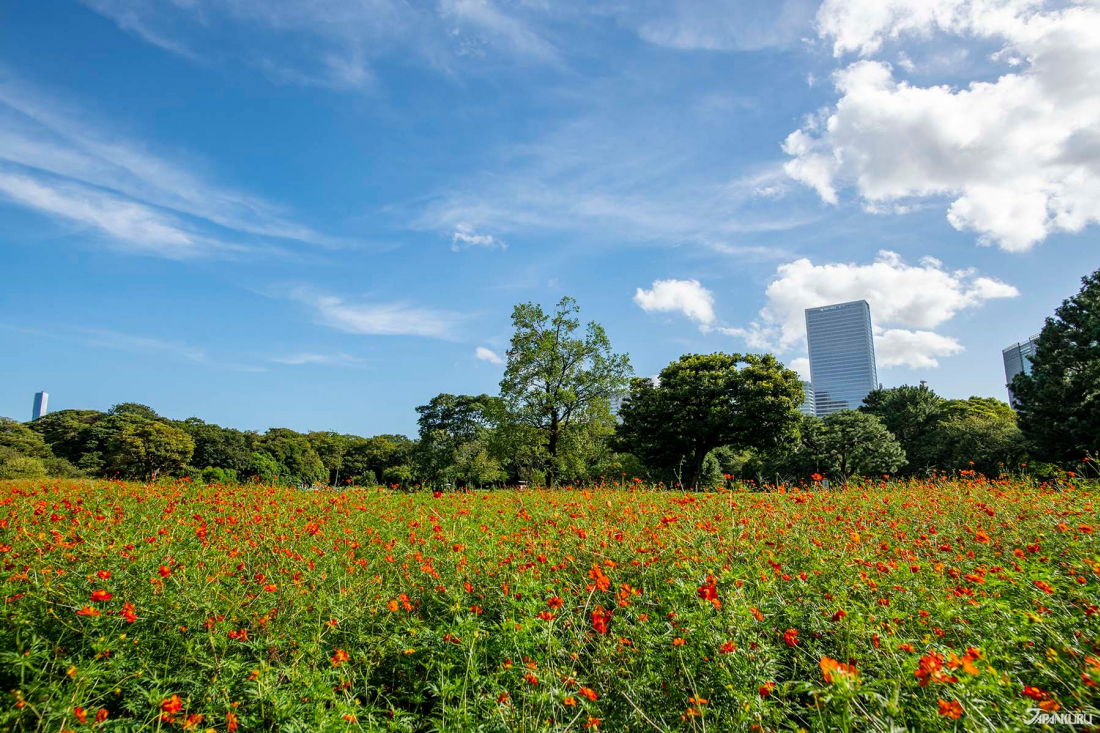
The Hamarikyu Gardens were originally duck hunting grounds for Edo-era (1603-1868) nobility, and a palace was built on the land for members of the Tokugawa clan, before it all slowly transformed into the mishmash of gardens found along the edge of Tokyo Bay in the present day. These large and waterlogged urban parklands are located at the mouth of the Sumida River, and the Shioiri-no-Ike (Tidal Pond) with a waterline that rises and falls with the tide is still a major attraction, along with a little island teahouse serving refreshments, and plenty of seasonal flowers and foliage to provide enticement for visitors throughout the year. Despite being destroyed by both the Great Kanto earthquake in 1923 and Tokyo air raids in 1945, Hamarikyu is still a green oasis surrounded by the highways and highrise office buildings of central Tokyo.
While the gardens are quite popular during any season, the end of summer and early fall bring a wave of orange and yellow cosmos flowers to the grassy fields, and the vibrant petals take the place of bright rays of sunshine during the typhoon-plagued days of September. These simple, pretty flowers pop up in huge meadows all over Japan, turning them shades of orange, yellow, and even hot pink, which is likely why one traditional Japanese name for the cosmos is “akizakura” (秋桜), literally “fall cherry blossom.”
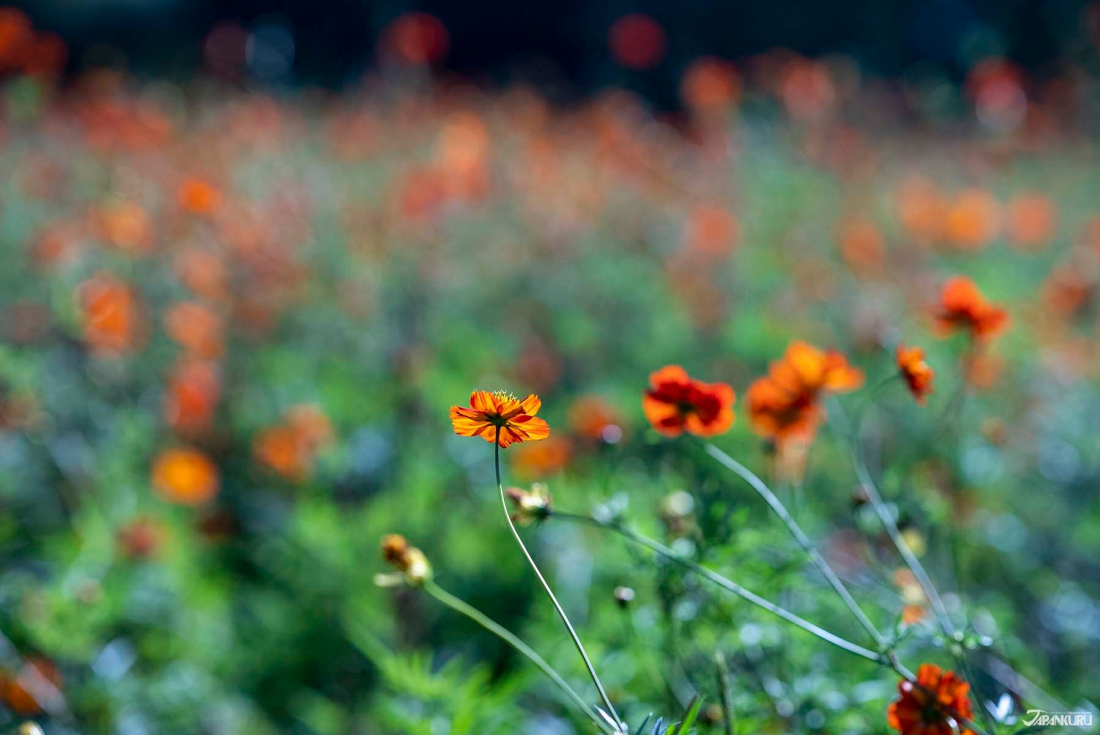
Hamarikyu Gardens (浜離宮庭園)
1-1 Hamarikyuteien, Chuo City, Tokyo
Peak Blooming Period: late September ~ mid-November
Open: 9:00 – 17:00
Admission: 300 yen
Official Website (jp)
② Spider Lilies at Yokoamicho Park
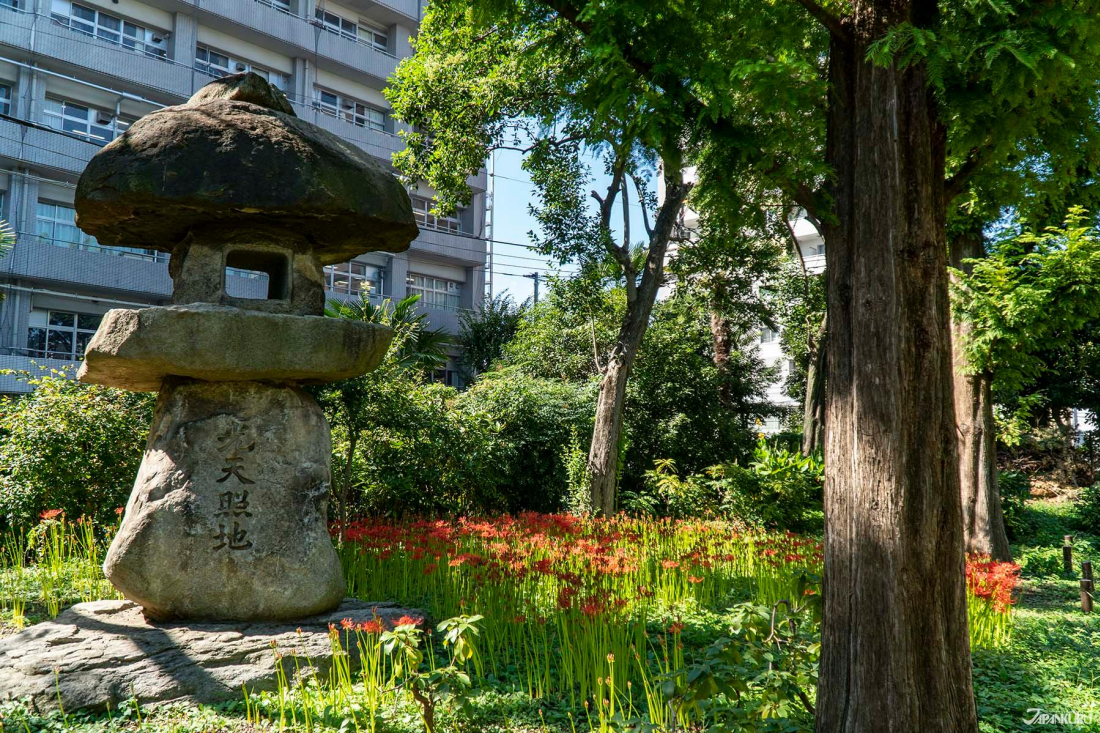
Yokoamicho Park is a quiet, sunny Tokyo park, with a shady Japanese garden, and a small playground buzzing with local families, but the memorial hall and museum on the grounds hint at the park’s sad history. Just like Hamarikyu Gardens, Yokoamicho Park was scorched by the fires following the Great Kanto earthquake back in 1923. Unfortunately, the park was being used as evacuation grounds in the aftermath of the natural disaster, and strong winds fanning the flames resulted in the deaths of many taking shelter. These days visitors are welcomed into the Great Kanto Earthquake Memorial Museum to learn about the disaster with the aid of plenty of real items and photographs from the time, and the enormous memorial hall is open to those who wish to pay their respects.
Of course, a trip to the park isn’t all doom and gloom. Yokoamicho Park is a great place to learn about a somber time in Tokyo’s history, but it also has some of the prettiest red spider lilies in the city, clustered around an enormous stone garden lantern. Celebrations of the fall season in Japan are all about fall colors, or “koyo,” which usually refers to the leaves changing color – but the vivid red of the spider lily is its own sign of the fall, alerting all to the changing of the seasons. The Japanese name for the flower, “higanbana” (彼岸花), literally refers to the autumn equinox and surrounding days, making them a true fall flower!
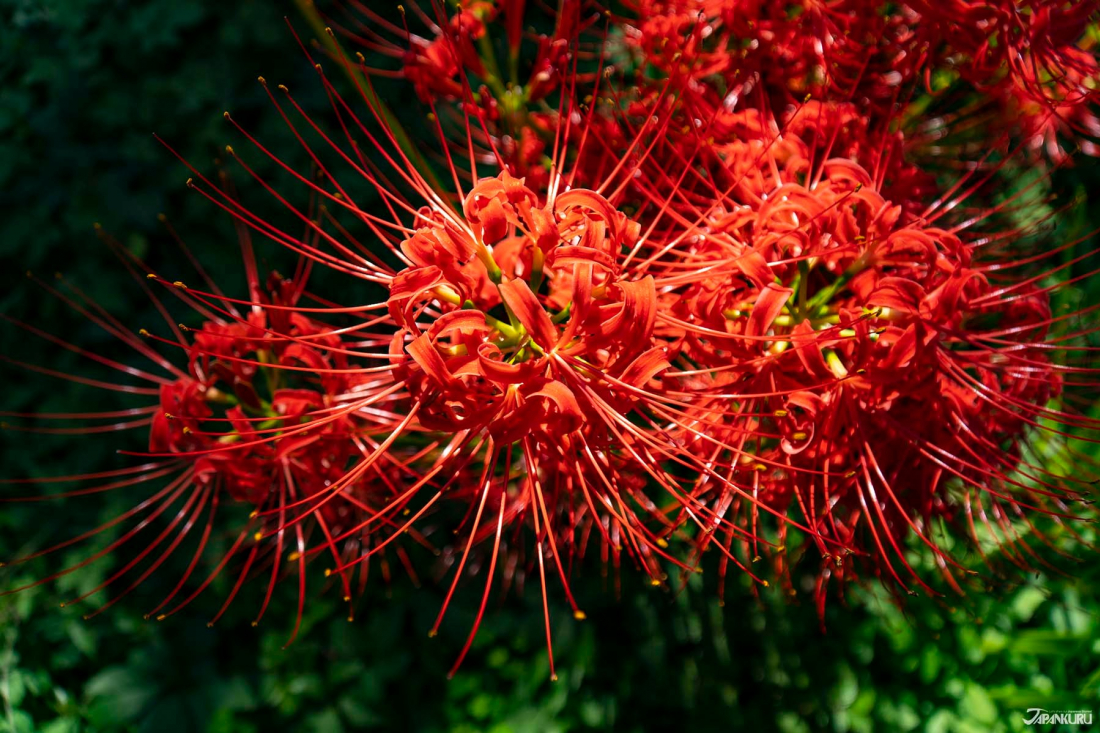
Yokoamicho Park (横網町公園)
2-3-25 Yokoami, Sumida City, Tokyo
Peak Blooming Period: mid-September ~ early October
Open: 24/7
Admission: free
Official Website (en)
③ Bushclover at Mukojima-Hyakkaen
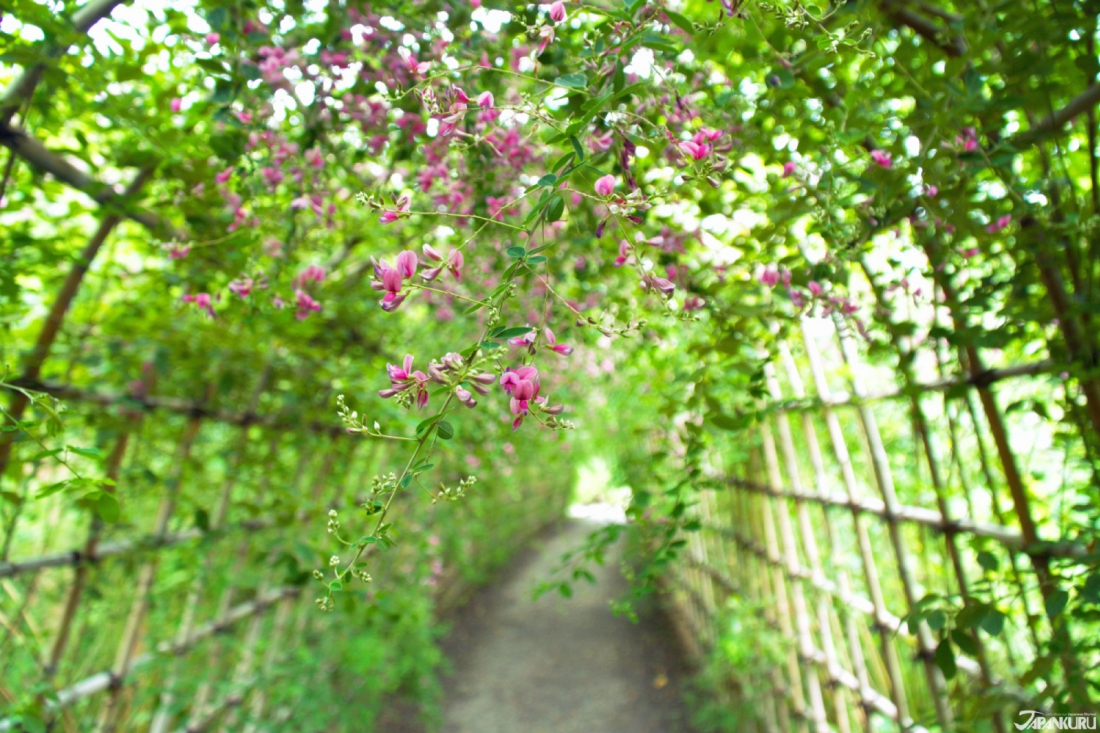
Many of Japan’s most famous gardens started as leisure grounds for one samurai or another, but the landscaping of Mukojima-Hyakkaen Garden is a sign of how it took shape in a different way, as the flower gardens of an Edo-era merchant. Translated directly, the name means Mukojima Hundred Flower Garden, and construction started back in when an antiques dealer from northern Japan named Sahara Kiku planted a whopping 360 ume plum trees on the grounds. As the years went on, Sahara turned the gardens into a gathering place for poets, painters, and other artists, and the gardens flourished alongside his literary salon, filling with ponds, pathways, and plenty of new flowers as well. Like so many gardens, Mukojima-Hyakkaen faced all kinds of hard times throughout the first half of the 20th century, but restoration efforts in later decades leave us now with a beautiful garden open to the public, officially designated a Japanese National Place of Scenic Beauty.
Mukojima-Hyakkaen still has poem-inscribed stones left behind by the literary figures who once walked the paths in addition to all kinds of flowers for budding artists to admire, but perhaps the most popular spot in the garden is the bush clover tunnel. This long trellis tunnel, just high enough to walk through mostly unimpeded, is covered with a heavy layer of green leaves and scattered with clusters of pinkish-purple flowers that bloom in mid-to-late September, while leafy tendrils drape down into the tunnel to brush the heads of those who pass through. In Japan, the bush clover is traditionally a symbol of unrequited love, but for modern couples, Mukojima-Hyakkaen’s long flower tunnel is really a rather romantic destination.
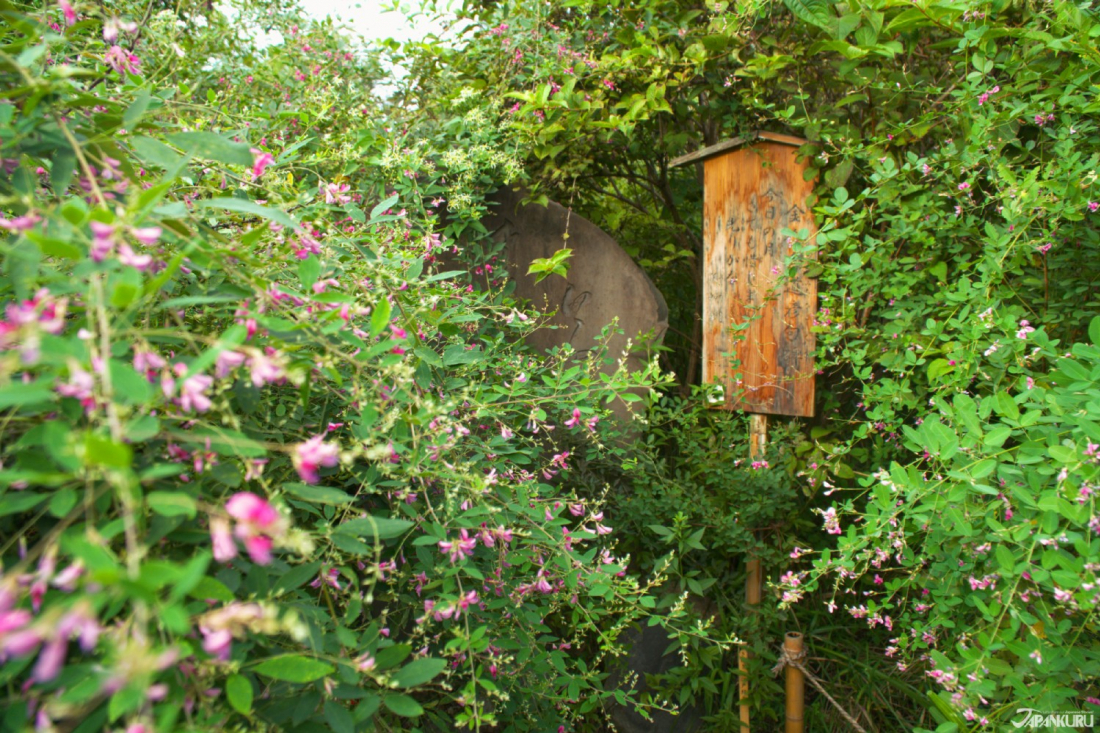
Mukojima-Hyakkaen Garden (向島百花園)
3-18-3 Higashimukojima, Sumida City, Tokyo
Bush Clover Festival 2025: September 13 ~ October 4, 2025
Open: 9:00 – 17:00
Admission: 150 yen
Official Website (jp)
Make the Most of the Autumn Flowers
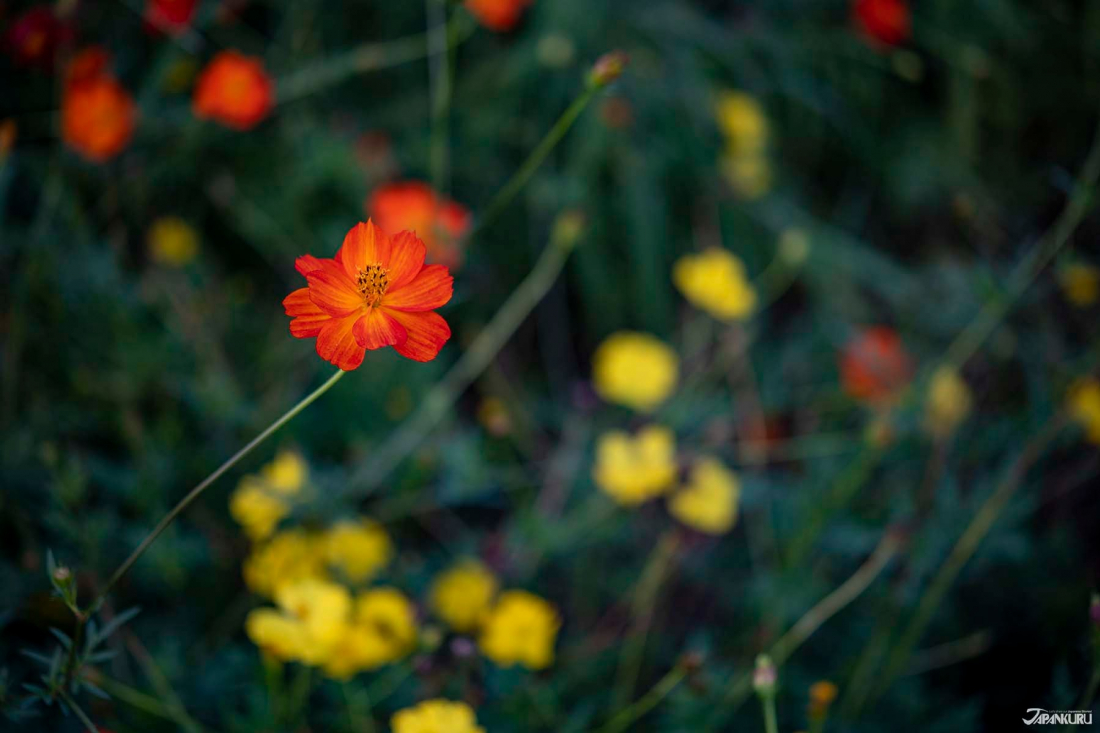
With lots of great places to enjoy the fall flowers around Japan, the next question is this: what’s the best way to make the most of your hanami outing? In spring, the answer is easy, since the people of Japan have been laying out mats, digging into bento boxes, and drinking sake under the cherry blossom trees for centuries. In fall, there’s no reason not to do the same! Aside from the occasional typhoon to rain on your parade, Japan boasts mild autumn weather perfect for spending the day out among the flowers, making it a great time for a picnic. However you choose to enjoy your autumn hanami outing, the flowers will be just as lovely, so don’t miss this chance to enjoy the beauty of fall!
For more info and updates from Japan, check Japankuru for new articles, and don’t forget to follow us on X (Twitter), Instagram, and Facebook!
Details
NAME:Fall Flowers (秋の花)
COMMENT
FEATURED MEDIA
VIEW MORE 
A New Tokyo Animal Destination: Relax & Learn About the World’s Animals in Japan
#pr #japankuru #anitouch #anitouchtokyodome #capybara #capybaracafe #animalcafe #tokyotrip #japantrip #카피바라 #애니터치 #아이와가볼만한곳 #도쿄여행 #가족여행 #東京旅遊 #東京親子景點 #日本動物互動體驗 #水豚泡澡 #東京巨蛋城 #เที่ยวญี่ปุ่น2025 #ที่เที่ยวครอบครัว #สวนสัตว์ในร่ม #TokyoDomeCity #anitouchtokyodome

Shohei Ohtani Collab Developed Products & Other Japanese Drugstore Recommendations From Kowa
#pr #japankuru
#kowa #syncronkowa #japanshopping #preworkout #postworkout #tokyoshopping #japantrip #일본쇼핑 #일본이온음료 #오타니 #오타니쇼헤이 #코와 #興和 #日本必買 #日本旅遊 #運動補充能量 #運動飲品 #ช้อปปิ้งญี่ปุ่น #เครื่องดื่มออกกำลังกาย #นักกีฬา #ผลิตภัณฑ์ญี่ปุ่น #อาหารเสริมญี่ปุ่น

도쿄 근교 당일치기 여행 추천! 작은 에도라 불리는 ‘가와고에’
세이부 ‘가와고에 패스(디지털)’ 하나면 편리하게 이동 + 가성비까지 완벽하게! 필름카메라 감성 가득한 레트로 거리 길거리 먹방부터 귀여움 끝판왕 핫플&포토 스폿까지 총집합!
Looking for day trips from Tokyo? Try Kawagoe, AKA Little Edo!
Use the SEIBU KAWAGOE PASS (Digital) for easy, affordable transportation!
Check out the historic streets of Kawagoe for some great street food and plenty of picturesque retro photo ops.
#pr #japankuru #도쿄근교여행 #가와고에 #가와고에패스 #세이부패스 #기모노체험 #가와고에여행 #도쿄여행코스 #도쿄근교당일치기 #세이부가와고에패스
#tokyotrip #kawagoe #tokyodaytrip #seibukawagoepass #kimono #japantrip

Hirakata Park, Osaka: Enjoy the Classic Japanese Theme Park Experience!
#pr #japankuru #hirakatapark #amusementpark #japantrip #osakatrip #familytrip #rollercoaster #retrôvibes #枚方公園 #大阪旅遊 #關西私房景點 #日本親子旅行 #日本遊樂園 #木造雲霄飛車 #히라카타파크 #สวนสนุกฮิราคาตะพาร์ค

🍵Love Matcha? Upgrade Your Matcha Experience With Tsujiri!
・160년 전통 일본 말차 브랜드 츠지리에서 말차 덕후들이 픽한 인기템만 골라봤어요
・抹茶控的天堂!甜點、餅乾、飲品一次滿足,連伴手禮都幫你列好清單了
・ส่องมัทฉะสุดฮิต พร้อมพาเที่ยวร้านดังในอุจิ เกียวโต
#pr #japankuru #matcha #matchalover #uji #kyoto #japantrip #ujimatcha #matchalatte #matchasweets #tsujiri #말차 #말차덕후 #츠지리 #교토여행 #말차라떼 #辻利抹茶 #抹茶控 #日本抹茶 #宇治 #宇治抹茶 #日本伴手禮 #抹茶拿鐵 #抹茶甜點 #มัทฉะ #ของฝากญี่ปุ่น #ชาเขียวญี่ปุ่น #ซึจิริ #เกียวโต

・What Is Nenaito? And How Does This Sleep Care Supplement Work?
・你的睡眠保健品——認識「睡眠茶氨酸錠」
・수면 케어 서플리먼트 ‘네나이토’란?
・ผลิตภัณฑ์เสริมอาหารดูแลการนอน “Nenaito(ネナイト)” คืออะไร?
#pr #japankuru #sleepcare #japanshopping #nenaito #sleepsupplement #asahi #睡眠茶氨酸錠 #睡眠保健 #朝日 #l茶胺酸 #日本藥妝 #日本必買 #일본쇼핑 #수면 #건강하자 #네나이토 #일본영양제 #อาหารเสริมญี่ปุ่น #ช้อปปิ้งญี่ปุ่น #ร้านขายยาญี่ปุ่น #ดูแลตัวเองก่อนนอน #อาซาฮิ

Japanese Drugstore Must-Buys! Essential Items from Hisamitsu® Pharmaceutical
#PR #japankuru #hisamitsu #salonpas #feitas #hisamitsupharmaceutical #japanshopping #tokyoshopping #traveltips #japanhaul #japantrip #japantravel

Whether you grew up with Dragon Ball or you just fell in love with Dragon Ball DAIMA, you'll like the newest JINS collab. Shop this limited-edition Dragon Ball accessory collection to find some of the best Dragon Ball merchandise in Japan!
>> Find out more at Japankuru.com! (link in bio)
#japankuru #dragonball #dragonballdaima #animecollab #japanshopping #jins #japaneseglasses #japantravel #animemerch #pr

This month, Japankuru teamed up with @official_korekoko to invite three influencers (originally from Thailand, China, and Taiwan) on a trip to Yokohama. Check out the article (in Chinese) on Japankuru.com for all of their travel tips and photography hints - and look forward to more cool collaborations coming soon!
【橫濱夜散策 x 教你怎麼拍出網美照 📸✨】
每次來日本玩,是不是都會先找旅日網紅的推薦清單?
這次,我們邀請擁有日本豐富旅遊經驗的🇹🇭泰國、🇨🇳中國、🇹🇼台灣網紅,帶你走進夜晚的橫濱!從玩樂路線到拍照技巧,教你怎麼拍出最美的夜景照。那些熟悉的景點,換個視角說不定會有新發現~快跟他們一起出發吧!
#japankuru #橫濱紅磚倉庫 #汽車道 #中華街 #yokohama #japankuru #橫濱紅磚倉庫 #汽車道 #中華街 #yokohama #yokohamaredbrickwarehouse #yokohamachinatown

If you’re a fan of Vivienne Westwood's Japanese designs, and you’re looking forward to shopping in Harajuku this summer, we’ve got important news for you. Vivienne Westwood RED LABEL Laforet Harajuku is now closed for renovations - but the grand reopening is scheduled for July!
>> Find out more at Japankuru.com! (link in bio)
#japankuru #viviennewestwood #harajuku #omotesando #viviennewestwoodredlabel #viviennewestwoodjapan #비비안웨스트우드 #오모테산도 #하라주쿠 #日本購物 #薇薇安魏斯伍德 #日本時尚 #原宿 #表參道 #japantrip #japanshopping #pr

Ready to see TeamLab in Kyoto!? At TeamLab Biovortex Kyoto, the collective is taking their acclaimed immersive art and bringing it to Japan's ancient capital. We can't wait to see it for ourselves this autumn!
>> Find out more at Japankuru.com! (link in bio)
#japankuru #teamlab #teamlabbiovortex #kyoto #kyototrip #japantravel #artnews
Photos courtesy of teamLab, Exhibition view of teamLab Biovortex Kyoto, 2025, Kyoto ® teamLab, courtesy Pace Gallery

Japanese Makeup Shopping • A Trip to Kamakura & Enoshima With Canmake’s Cool-Toned Summer Makeup
#pr #canmake #enoshima #enoden #에노시마 #캔메이크 #japanesemakeup #japanesecosmetics

⚔️The Robot Restaurant is gone, but the Samurai Restaurant is here to take its place. Check it out, and don't forget your coupon!
🍣신주쿠의 명소 로봇 레스토랑이 사무라이 레스토랑으로 부활! 절찬 쿠폰 발급중
💃18歲以上才能入場的歌舞秀,和你想的不一樣!拿好優惠券去看看~
#tokyo #shinjuku #samurairestaurant #robotrestaurant #tokyotrip #도쿄여행 #신주쿠 #사무라이레스토랑 #이색체험 #할인이벤트 #歌舞伎町 #東京景點 #武士餐廳 #日本表演 #日本文化體驗 #japankuru #japantrip #japantravel #japanlovers #japan_of_insta

Japanese appliance & electronics shopping with our KOJIMA x BicCamera coupon!
用JAPANKURU的KOJIMA x BicCamera優惠券買這些正好❤️
코지마 x 빅 카메라 쿠폰으로 일본 가전 제품 쇼핑하기
#pr #japankuru #japanshopping #kojima #biccamera #japaneseskincare #yaman #dji #osmopocket3 #skincaredevice #日本購物 #美容儀 #相機 #雅萌 #日本家電 #일본여행 #면세 #여행꿀팁 #일본쇼핑리스트 #쿠폰 #일본쇼핑 #일본브랜드 #할인 #코지마 #빅카메라 #japankurucoupon
MAP OF JAPAN
SEARCH BY REGION

LATEST
VIEW MOREEVENT CALENDAR
VIEW MORE